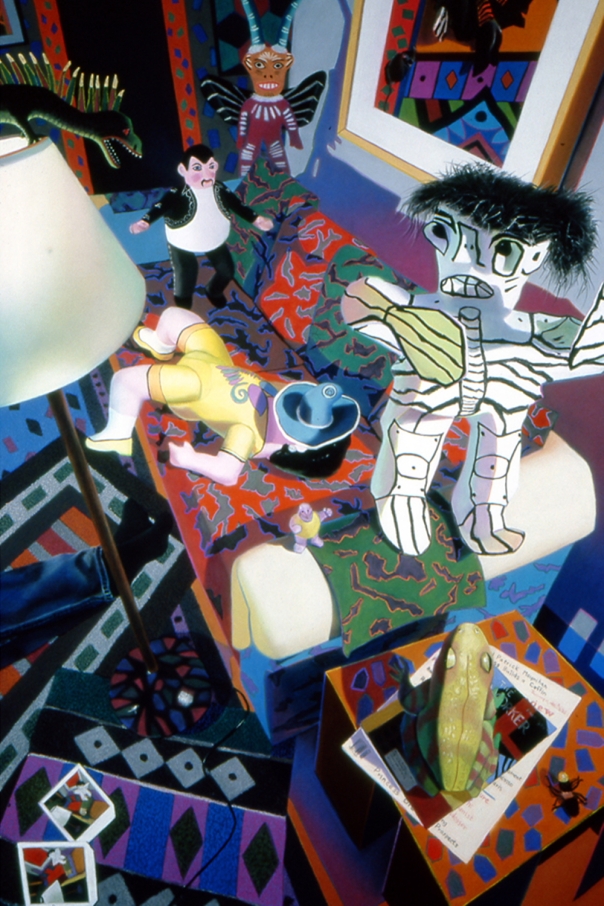A: I’d say it was the approximately six months in 2007 when I finished the “Domestic Threats” series and was blocked, certain that a strong body of work was behind me, but not knowing what in the world to do next. For a professional artist who had been prolific and non-stop for 21 years, this was a profoundly painful, confusing, and disorienting time. What I remember most is continuing to force myself to go to the studio any way and, for lack of anything productive to do there, spending long hours soul-searching and reading and thinking about art.
Eventually after all of this self-reflection I figured things out and had an epiphany. “Between,” with drastically simplified imagery, was the first painting in a new series, the “Black Paintings.” The series continues and if I may say so, includes some of my most accomplished work to date.
Comments are welcome!
Filed under: Uncategorized Tagged: "Black Paintings", "Epiphany", accomplished, anything, approximately, artist, became, behind, between, blocked, certain, confusing, continues, continuing, disorienting, Domestic Threats, drastically, eventually, experience, figured, finished, imagery, includes, knowing, myself, non-stop, painful, painting, pastel, productive, professional, profoundly, proific, reading, remember, sandpaper, scariest, self-reflection, series, simplified, soul-searching, spending, Studio


















